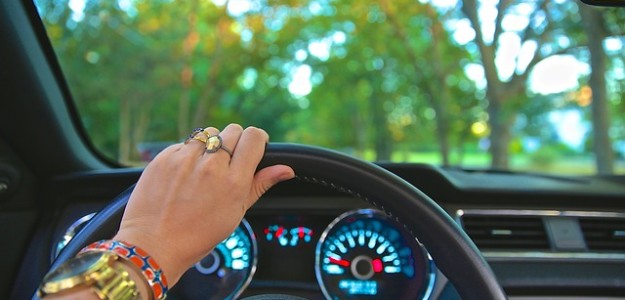
Cruise control is one of the most popular features of cars these days. It makes long journeys a little bit less tiring, and helps to stop drivers from getting mental fatigue (and speeding tickets!). Automotive cruise control is something found on a lot of American cars, but is less common in Europe, where roads are smaller and shorter, so there's less need for the feature. The most basic cruise control systems are quite limited, just setting the speed of the car until you override it. This type of feature is becoming less and less useful as the roads get busier, though, and more sophisticated adaptive cruise control features are rising to prominence.
How Cruise Control Works Cruise control can be used to set the speed and the acceleration or deceleration of your car. Basic cruise control features will kick in when your car goes above a certain speed (so you don't have to worry about it mistakenly taking over in residential areas), and will stop when you hit the brakes. Basic cruise control is ideal for keeping your car going at a set speed on the motorway, and you can tap a button to tell the car you want to go faster or slower (in increments of 1-5 mph), or to tell the car you want to 'coast' and cut the accelerator entirely. Modern cruise control systems are powered by sophisticated computers, which will monitor the speed of the car and then accelerate to reach the target speed, without overshooting that speed. They'll then maintain that speed even if you end up going up a steep hill. They monitor the car's speed and adjust the throttle to maintain it, using something called proportional control – they look at the speed the car is going now, and the target speed – so if you’re at 45 mph and have a target speed of 55 mph, the throttle will be significantly adjusted to rectify that. Conversely, if you're at 50 mph, the throttle will be adjusted by a smaller margin because that's all that's necessary. Using something called proportional-integral-derivative control or PID, which is a complex calculation based on calculus, it's possible to keep your car at a steady speed even when going up and down hills. That's just one part of what modern cruise control systems do, though.
Adaptive Cruise Control Adaptive cruise control is an even more sophisticated control mechanism, and one that's becoming increasingly popular. With
adaptive cruise control, your car doesn't just monitor its speed, it monitors the distance between itself and the car in front, and keeps you at a pre-set speed, while also ensuring it does not get too close to the vehicle in front. If the car in front of you slows down, or if the camera detects another nearby obstacle, it will decelerate in an attempt to prevent a collision, then re-accelerate when the road ahead is clear again. Adaptive cruise control is a nice safety feature, and very useful for people who drive long distances. There are other modern systems for lane change detection and collision warnings, which can help to keep drivers safe as well. Adaptive cruise control is one significant step towards 'self driving' cars, but it should not be treated as such by motorists. Cruise control is there to manage the speed of the car so you don't get fatigue in your legs, and so you can put more focus towards what's going on around you. It stops you from speeding by accident, and it helps to prevent mental fatigue. It also helps to reduce your fuel usage – because accelerating and breaking too often can actually use more fuel than maintaining a regular speed. So, next time you're shopping for a car, take a look at the cruise control options available to you. Adaptive cruise control is the way to go if you can find a car that offers it – but remember to use it only as a driving assist – not as something that'll take over and eliminate the brain work of driving safely and effectively!
Book An Appointment